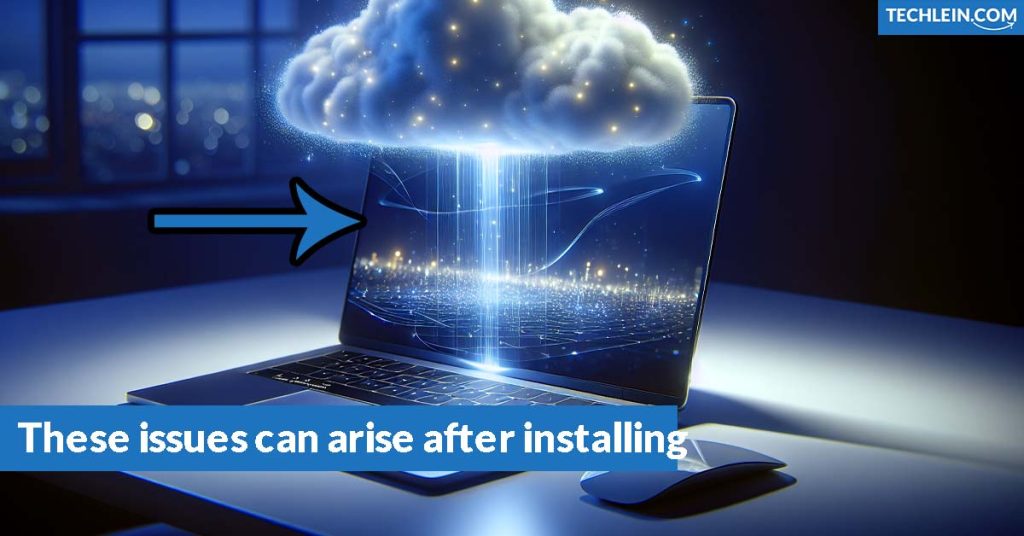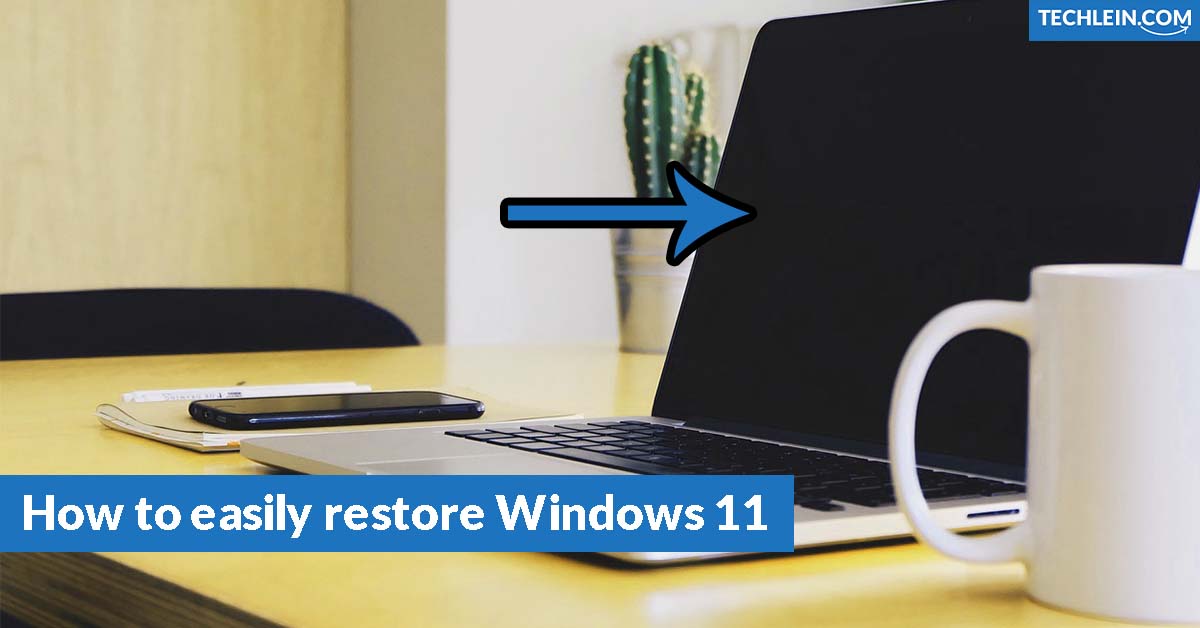This guide will walk readers through How to easily restore Windows 11 from the cloud. It covers when to think about using cloud restoration, getting ready for a successful cloud restore, and the step-by-step process to carry out the restoration. By the end, users will have a clear understanding of this valuable feature and how to use it to solve their Windows 11 problems quickly and effectively.
RELATED ARTICLE: Where Can I Use A Computer And Printer Near Me
When to Consider a Cloud Restore for Windows 11
Cloud restoration for Windows 11 is a powerful tool that can help users address various issues with their operating system. There are several scenarios where users might want to consider using this feature to restore their system to a healthy state.
System Performance Issues
One of the primary reasons to consider a cloud restore is when a Windows 11 system experiences significant performance problems. Users might notice their PC running unusually slow, programs failing to launch, or the system becoming nearly unusable. These issues can arise after installing updates or new software that may conflict with existing system components.

Windows 11 users now have a powerful tool at their fingertips: cloud restoration. This feature allows them to easily restore Windows 11 from the cloud, providing a lifeline when traditional recovery methods fall short. As technology advances, Microsoft has integrated this cloud-based solution to streamline the process of recovering a system, making it more accessible and efficient for users facing critical issues with their operating system.
For instance, some users have reported severe performance degradation after installing certain Windows updates. In one case, a user experienced extreme slowdowns and program failures after installing the KB5011493 update [2]. While the user initially suspected it might be related to a firmware Trusted Platform Module (TPM) issue, the symptoms were more severe than the reported intermittent stuttering associated with that problem.
When faced with such performance issues, users should first try other troubleshooting methods. These may include:
- Running a virus scan using Windows Security or other antivirus software
- Checking for and installing the latest Windows updates
- Performing a system restore to a previous restore point
If these steps don’t resolve the issue, a cloud restore might be the next best option to get the system back to a stable state.
Malware Infections
Another crucial scenario where cloud restoration becomes valuable is in the case of malware infections. Malware, including viruses and ransomware, can severely impact system performance and compromise user data.
Ransomware, a particularly malicious type of malware, is designed to block access to files until a ransom is paid [3]. If a user suspects their system has been infected with ransomware or other types of malware, a cloud restore can be an effective solution to eliminate the threat and restore the system to a clean state.
Before proceeding with a cloud restore due to a suspected malware infection, users should:
- Run a thorough antivirus scan using up-to-date antimalware software
- Isolate the infected device from other devices and networks
- Back up important files that are not infected (if possible)
It’s important to note that simply signing into Windows 11 with a Microsoft account that was previously associated with an infected system does not automatically reinfect the new installation [4]. However, if OneDrive was set to save personal folders, there’s a possibility that infected files could be downloaded if they were uploaded while the system was compromised.
Preparing to Sell or Give Away Your PC
Cloud restoration is also an excellent option for users who are planning to sell or give away their Windows 11 PC. This process ensures that all personal data is removed from the device, providing a fresh start for the new owner.
When preparing a PC for transfer to another person, users should:
- Back up all important data to an external drive or cloud storage
- Use the “Reset this PC” feature with the “Remove everything” option
- Choose the “Cloud download” option to ensure a clean installation
- Select the option to clean the drive, making it harder to recover files
This process not only removes personal files but also reinstalls Windows, ensuring that the new owner receives a clean and functional system. After completing the reset, users should also remove the device from their Microsoft account to unlink it completely.
By considering a cloud restore in these scenarios, Windows 11 users can effectively address performance issues, recover from malware infections, and prepare their devices for transfer to new owners. This feature provides a reliable method to return the system to a clean, stable state while minimizing the risk of data loss or persistent issues.
Setting Up for a Successful Cloud Restore
Creating Data Backups
Before initiating a cloud restore for Windows 11, it’s crucial to back up all important data. Users can leverage OneDrive, Microsoft’s integrated cloud storage solution, which works seamlessly with Windows 11 and simplifies the recovery process. OneDrive allows for the synchronization of various data and settings without the need for additional apps or services.
To create a comprehensive backup:
- Open the Windows Backup tool from the Start menu.
- Use the tool to back up data to OneDrive.
- Consider backing up settings in Windows 11, which can be applied after restoration.
For those not yet using OneDrive, it can be set up quickly before the cloud is restored. This approach makes the recovery process much more straightforward, as data can be easily restored to the PC or other devices signed in with the same Microsoft account.
Ensuring Stable Internet Connection
A stable internet connection is vital for a successful cloud restore. If using a laptop, ensure it’s connected to a reliable network. In cases where Wi-Fi might not function, consider using an Ethernet cable for a more stable connection.

It’s important to note that if the internet connection fails during the Cloud Reset process, the outcome depends on when the failure occurs. In most cases, Windows can recover, but sometimes users may need to create a bootable Windows 11 USB from the Microsoft website for a clean installation if the necessary files weren’t fully downloaded.
Verifying Windows 11 License
Before proceeding with a cloud restore, it’s essential to verify the authenticity of the Windows 11 license. While Microsoft doesn’t provide a direct service to verify product keys, there are ways to check the license type:
- Run Command Prompt as Administrator.
- Enter the command:
Slmgr /dli - Check the license type displayed:
- Retail: Purchased online or in-store
- OEM: Pre-installed by the manufacturer
- Volume: Typically for large organizations or educational institutions [24]
Ensure that the license type matches how the computer was acquired. If it does, there’s a high likelihood that it’s authentic [24].
How to Easily Restore Windows 11 from the Cloud
To initiate the cloud restore process:
- Go to Settings > System > Recovery.
- Click on “Reset PC.”
- Choose between “Keep my files” or “Remove all.” If “Keep my files” doesn’t work, try “Remove all”.
- Select “Cloud Download” to ensure a complete restoration with new installation files [18].
The wizard will then download the necessary files and reset Windows 11 completely. Once confirmed, this process cannot be canceled [18].
After the reset:
- Log in with the same Microsoft account used for backups and OneDrive synchronization.
- Ensure OneDrive is started and you’re logged in.
- Synchronization will begin automatically.
- Restore data and settings from the Windows Backup app under Account > Windows Backup [18].
It’s worth noting that the cloud download option will reinstall the same build, version, and edition of Windows that was previously in use. This method is beneficial when:
- The installation is too damaged to use local files.
- Users don’t have a recent Windows 11 ISO backup.
- Storage space for a large ISO file is limited.
- There’s no access to a high-capacity thumb drive or DVD for ISO storage.
Following these steps and ensuring proper preparation, users can easily restore Windows 11 from the cloud, addressing various issues such as performance problems, malware infections, or preparing a device for transfer to a new owner.
Cloud Restore Procedure
Accessing Recovery Options
To begin the cloud restore process for Windows 11, users have multiple ways to access the recovery options. The most straightforward method is through the Settings menu:
- Go to Start > Settings > System > Recovery
- Next to “Reset this PC,” select “Reset PC” [28]
For users experiencing issues with Windows startup, they can access recovery options through the sign-in screen:
- Press the Windows logo key + L to get to the sign-in screen
- Restart the PC by pressing the Shift key while selecting the Power button > Restart in the lower-right corner of the screen
- The PC will restart in the Windows Recovery Environment (WinRE) [28]
Choosing Cloud Download
When initiating the reset process, users will be presented with two options for reinstalling Windows:
- Local reinstall
- Cloud download
To ensure a complete restoration with new installation files, users should select the “Cloud Download” option [31]. This method is beneficial when:
- The current Windows installation is severely corrupted
- Users don’t have a recent Windows 11 ISO backup
- Storage space for a large ISO file is limited
- There’s no access to a high-capacity thumb drive or DVD for ISO storage [31]
It’s important to note that a stable internet connection is crucial for this process. If using a laptop, users should ensure it’s connected to a reliable network or consider using an Ethernet cable for a more stable connection [25].
Selecting Restore Preferences
After choosing the cloud download option, users will be prompted to select their restore preferences. The two main options are:
- Keep my files
- Remove all
If the “Keep my files” option doesn’t work, users can attempt the process again with “Remove all” [29]. It’s important to note that the “Remove all” option will revert the system to factory default settings, including user preferences.

For users who have experienced malware infections or are preparing to transfer their device to a new owner, the “Remove all” option is recommended to ensure a clean installation.
Initiating and Overseeing the Restore
Once the preferences are set, the installation wizard will prepare for the reset. Users should be aware that after confirming the process, it can no longer be canceled. The system will then download a fresh copy of Windows to be used in the reset process.
During the restore process:
- The PC will restart multiple times
- The screen may go blank for extended periods
- Users should ensure the PC is plugged in and doesn’t lose power
If the internet connection fails during the Cloud Reset process, the outcome depends on when the failure occurs. In most cases, Windows can recover, but sometimes users may need to create a bootable Windows 11 USB from the Microsoft website for a clean installation if the necessary files weren’t fully downloaded [19].
After the reset is complete, users should log in with the same Microsoft account used for backups and OneDrive synchronization. This will allow for easy restoration of data and settings:
- Ensure OneDrive is started and logged in
- Synchronization will begin automatically
- Restore data and settings from the Windows Backup app under Account > Windows Backup [29]
By following these steps, users can successfully restore Windows 11 from the cloud, addressing various issues such as performance problems, malware infections, or preparing a device for transfer to a new owner. This method provides a reliable way to return the system to a clean, stable state while minimizing the risk of data loss or persistent issues.
Conclusion
Cloud restoration in Windows 11 has a significant impact on system recovery, offering users a lifeline when traditional methods fall short. This feature provides a straightforward way to address performance issues, recover from malware infections, and prepare devices for transfer to new owners. By following the step-by-step guide outlined in this article, users can easily restore their Windows 11 systems from the cloud, ensuring a clean and stable operating environment.
To wrap up, the cloud restore process in Windows 11 represents a major leap forward in system maintenance and security. It gives users more control over their digital environments and simplifies the often daunting task of system recovery. As technology continues to evolve, features like cloud restoration are likely to become even more central to the user experience, making it easier than ever to keep our systems running smoothly and securely.
FAQs
How can I restore a Windows backup from the cloud?
To restore a Cloud PC to a previous state using Microsoft Intune, sign into the Microsoft Intune admin center, navigate to Devices > Windows 365 > All Cloud PCs, select the Cloud PC you wish to restore, click on Restore, choose a restore point under ‘Select restore point’, and then select it.
What steps are involved in resetting Windows from the cloud?
To reset your PC using cloud options, go to Start > Settings > Update & Security > Recovery. Click on ‘Reset this PC’ and then ‘Get Started’. Choose ‘Keep my files’, select whether to use cloud or local reinstall, adjust your settings accordingly, and ensure ‘Restore preinstalled apps?’ is set to ‘No’.
How do I perform a restore from the cloud to a new instance?
In the Google Cloud console, navigate to the Filestore instances page, click on ‘Backups’, select the backup you wish to restore from and click ‘Restore’. Then, click ‘New instance’, follow the on-screen instructions to configure the new instance, and click ‘Restore’ to complete the process.
What is the complete process to restore Windows 11?
To completely restore Windows 11, type ‘Reset this PC’ in the Windows search bar and click ‘Open’. In the ‘Reset this PC’ section, click ‘Reset PC’, choose ‘Remove everything’, and select ‘Local reinstall’. Then, click ‘Change settings’, choose the appropriate settings for your needs, and click ‘Confirm’ to start the restoration process.

